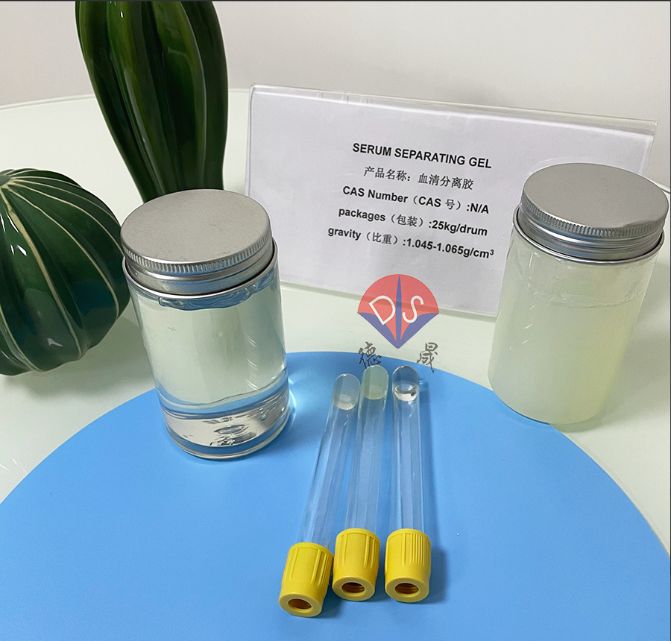How to extract the separated serum from the separation gel promoting tube
Release time:
2025-08-18
In clinical testing, medical research and other fields, serum is an important test sample, and the standardization of its acquisition process has a key impact on the test results. To extract the separated serum from the separation gel promoting tube, sufficient preparation should be made before operation, and the operation steps should be strictly followed. At the same time, attention should be paid to avoiding sample contamination, preventing serum hemolysis, and timely processing and storage of the sample. Only in this way can high-quality serum samples be obtained.

Preparation work before operation
1. Check the coagulation promoting tube and sample status
Before conducting serum extraction, carefully inspect the appearance of the separation gel promoting tube. Ensure that the tube is free of damage or cracks, the labels are clear and complete, and the patient information and collection time marked on it are accurate and correct. Observe the blood sample inside the tube to confirm that the blood has fully coagulated and the separation gel has been activated, clearly separating serum from blood cells and other components. Under normal circumstances, the serum is located in the upper layer, which is a pale yellow transparent liquid, the lower layer is blood cells, and the middle layer is a layer of gel like separation gel. If any abnormal conditions such as hemolysis or lipophilia are found in the sample, they should be recorded and informed in a timely manner.
2. Prepare the necessary equipment
Prepare a set of clean and sterile equipment, including sterile droppers, pipettes, centrifuge tubes, etc. Droplets should be selected with appropriate specifications. Generally, 1-2 milliliters of droppers are more commonly used, and their openings should be smooth to avoid scratching the separation gel or causing serum contamination when suctioning serum. The pipette needs to be calibrated in advance to ensure the accuracy of the suction volume, and the appropriate range of pipette should be selected according to actual needs. The centrifuge tube should be of high quality, with good transparency, to facilitate the observation of serum transfer, and to ensure its sterility and absence of impurities.
Steps for serum extraction operation
1. Pre treatment of coagulation promoting tubes
Remove the separation gel promoting tube from the centrifuge and gently place it on a stable experimental platform to avoid violent shaking and prevent the separated serum from re mixing with blood cells.
2. Extract serum
Using a sterile dropper or pipette, slowly insert it into the coagulation tube, keeping the dropper or pipette head in the middle of the serum layer as much as possible, avoiding contact with the separation gel and lower blood cells. If using a dropper, gently squeeze the rubber head of the dropper with your fingers and slowly aspirate the serum, paying attention to controlling the suction speed to avoid the formation of bubbles. If using a pipette, gently insert the pipette tip into the serum layer, press the control button of the pipette, and smoothly aspirate the required amount of serum. During the suction process, it is important to constantly observe the amount of suction to ensure that the required volume for the experiment is achieved. At the same time, it is necessary to avoid the suction head touching the separation gel, as once the separation gel is damaged, it may mix into the serum and affect the test results.
3. Serum transfer
Slowly transfer the extracted serum into a sterile centrifuge tube. When transferring, tilt the centrifuge tube so that the head of the dropper or pipette is close to the inner wall of the centrifuge tube, and slowly flow the serum down the tube wall to reduce the generation of bubbles during the transfer process. If there is a large amount of serum, it needs to be aspirated and transferred multiple times. After each transfer, ensure that there is no residual serum in the dropper or pipette, and clean the dropper or pipette appropriately before re aspiration to prevent cross contamination.
Precautions and Quality Control
1. Avoid sample contamination
The entire operation process requires strict adherence to the principle of aseptic operation. Operators should wear sterile gloves to avoid contaminating the samples. During the operation, try to minimize the opening time and avoid dust, microorganisms, etc. in the air from falling into the coagulation tube or centrifuge tube. The equipment used must be sterile, and if it is contaminated, it should be replaced immediately.
2. Prevent serum hemolysis
Hemolysis is one of the common problems with serum samples, which can seriously affect the test results. During the operation, it is important to avoid causing mechanical damage to blood cells, which could lead to the release of hemoglobin into the serum. For example, when suctioning serum, do not exert too much force to avoid excessive negative pressure generated by the suction head, which can damage blood cells. When transferring serum, avoid vigorous shaking of the centrifuge tube.

Product packaging
Hubei Xindesheng, as one of the manufacturers of blood collection vessel raw materials such as serum separation gel and blood coagulant, has strong supply capacity and excellent quality. Its serum separation gel can quickly separate serum and blood cells in the blood collection tube, reducing sample errors. And coagulants can accelerate blood clotting, greatly reducing the waiting time before testing. With advanced production technology and strict quality control, Xindesheng ensures that the quality of each batch of products is consistent. If you have purchasing intentions, please feel free to contact us at any time!
Previous page
Previous page
Contact details
Contact number
Address: C8, Guanggu United Science and Technology City, Ezhou City, Hubei Province
Fax:0711-3704 589
Follow us



